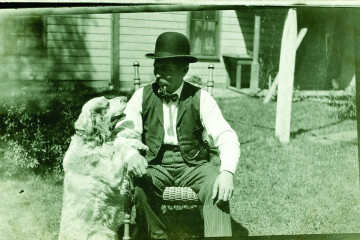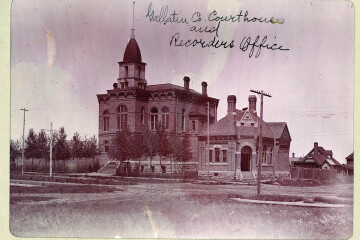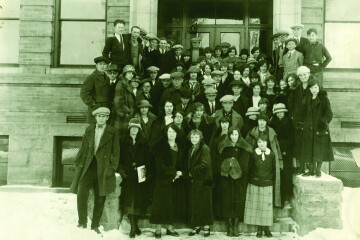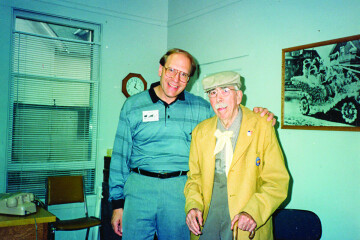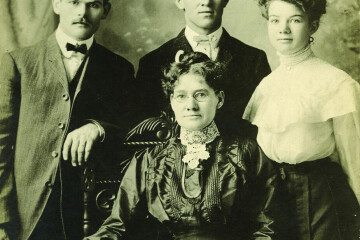Through the Lens | The Bozeman Camera Club and Gallatin County History
The holiday season is the perfect time to capture festive photographs—family and friends, colored outdoor lights reflecting through snow and ice, and, of course, downtown Bozeman’s famous Christmas decorations. In the last one hundred and thirty years, photographic equipment has evolved from large, unwieldy cameras to small-but-mighty digital devices that fit in a pocket. While equipment has changed drastically, interest in and enthusiasm for photography has not altered. Bozeman’s local photography club is the perfect example.
Established in 1894, the Bozeman Camera Club began with strong connections to Montana Agricultural College (now Montana State University). Members of this early club included James Reid, President of Montana State College from 1894-1904, and Professor William M. Cobleigh, who was a professor of engineering at Montana Agricultural College, and later served as Dean of the College of Engineering. Several women were part of the early club, including Mattie Gardner, who taught high school before marrying and raising a family. Mattie passed on her love of photography to her daughter Katherine, who, decades later, in a unique twist, participated in a new rendition of the Bozeman Camera Club.
The early Bozeman Camera Club enjoyed outings to picturesque locales like the West Gallatin River or Bridger Canyon, and it is evident from their photographs that they enjoyed themselves immensely, and documented their excursions with humor. One image in the Gallatin History Museum’s collection depicts an early dirt road through Rocky Canyon (where today’s I-90 runs east of Bozeman). A man perches high upon a rock formation, and a handwritten notation accompanying the image reads: “Pres. Reid told P.C.W. [Perley Clifton Waite] that he would climb to the top of the rock and ‘hold it down’ while the picture was being taken.”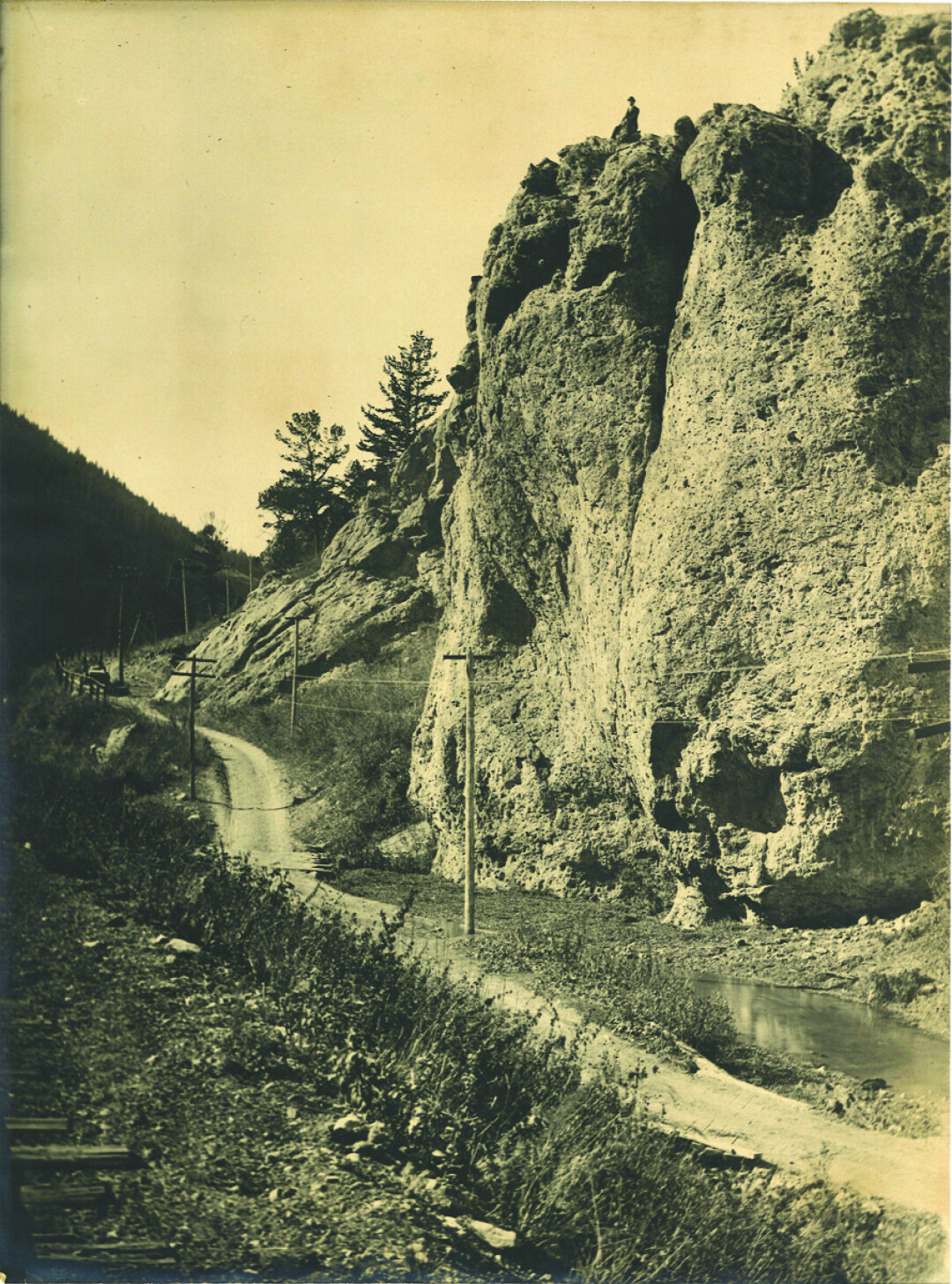
In September 1949, eighteen local photography enthusiasts established the modern version of the club, called the Camera Club of Bozeman. Members included teachers, librarians, and even professional photographers. This revived group, often referred to as the CCOB, was part of the Photographic Society of America. The organization’s initial core was soon expanded to twenty-five charter members. As recorded in the Constitution and By-Laws, the purpose of the Camera Club of Bozeman was to promote “the art and science of photography in its various branches, through the association of its members for study and entertainment in matters relating to photography; for photographic exhibitions and contests, and for any other purposes which will promote greater interest and betterment in the knowledge and practice of photography.” Annual club dues, which remained the same for the next twenty-five years, were $5.00 for a single person and $7.50 for a couple.
The Club’s first President was Helen Fechter, who grew up in Bozeman and obtained a bachelor’s degree in Secretarial Science from Montana State College in 1931. During WWII, Fechter spent four years as an administrative officer with the WAVES (United States Naval Reserve, Women Accepted for Volunteer Emergency Service). It was during her time in the military that Helen’s passion for photography exploded, and her photographs were added to official Navy files. In a speech to the Camera Club of Bozeman during their 25th Anniversary Banquet in 1974, she reminisced: “When I returned home [from military service] I couldn’t wait to buy my own speed graphic and get going. Then I wanted to talk to people about my problems, but couldn’t find anyone to talk to; that is how the idea of the camera club was born.”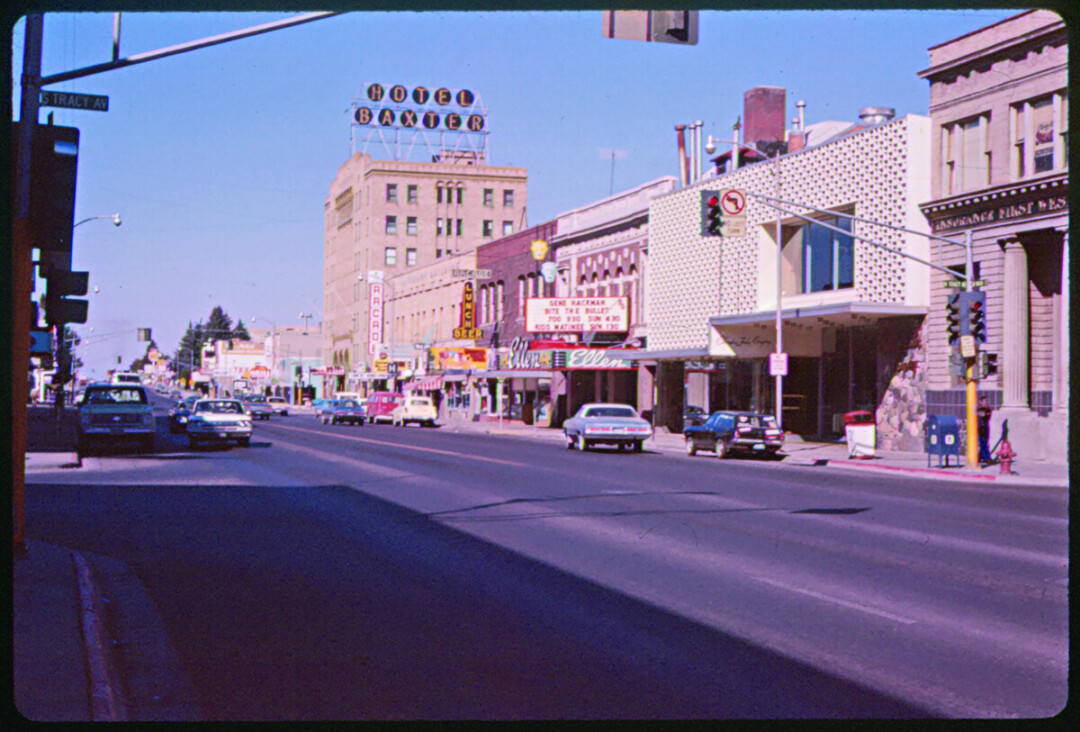
Fechter was introduced to local photographer Max Hunke, and the pair recruited friends and advertised for fellow enthusiasts in the Bozeman Daily Chronicle. Max Hunke hailed from North Dakota and worked for a time in Yellowstone National Park, where he acquired his love of photography. Hunke spent most of his career at Montana State College as a photographer for publications, and for the Athletic Department. His films of Bobcat football games proved invaluable to coaches from the mid-1950s through the mid-1970s.
Another charter member of the revived Bozeman Camera Club was Katherine Fisher. Katherine was born in Bozeman in 1908, to Roy W. and Mattie Gardner Fisher. Mattie Gardner Fisher was a member
of the original Bozeman Camera Club in the 1890s. Her daughter Katherine inherited the photography bug, which became a lifelong hobby. Katherine spent much of her professional career as a children’s librarian at the Bozeman Public Library when it was located in the Carnegie Library building on North Bozeman Avenue.
Photo contests and shows quickly became major facets of the CCOB’s activities. The First Annual Photographic Print Exhibit and Competition of the Camera Club of Bozeman was held on May 10, 1950. Local amateur photographers were invited to submit their work under the following subjects: Children, Animals, Nature, Pictorial, Portrait, Man’s Work and Art, Abstraction (Modern) and Miscellaneous. All participating club members started in the “Beginners” group and, through merit points and contest wins, moved up through the ranks to “Advanced,” then “Intermediate Salon,” and finally, “Salon.” One favorite contest held in the fall was the “Treasure Hunt,” held over a single weekend. Participants received one roll of film to shoot a number of assigned subjects over the course of a two-day period.
Beginning in the early 1970s, the CCOB sponsored an annual photography competition that was part of the Montana Winter Fair, held at the Gallatin County Fairgrounds. In a 1982 newspaper report of the event, club member Helen Fechter described it as “a top notch show.” Fellow member Charles R. Fox described the competition as “an exhibit that would show people how they stack up against one another.” Initially, the Camera Club accepted almost any photograph in the Winter Fair competition, but soon realized the benefits of being more selective in the entries allowed. New categories and photographic mediums soon emerged in the Winter Fair competition, and, according to Helen Fechter, it quickly became one of the largest photo exhibits in the state.
Besides contests and shows, the pride and joy of the Camera Club of Bozeman was the monthly Flash newsletter. The first issue, published in November 1949, informed the club’s twenty-five members that, “We want to keep you informed about what the club is planning from month to month... Let us know what you are doing photographically. Send us any news items you can.” The Flash published information about upcoming speakers and shows, contest instructions and winners, and field trip news.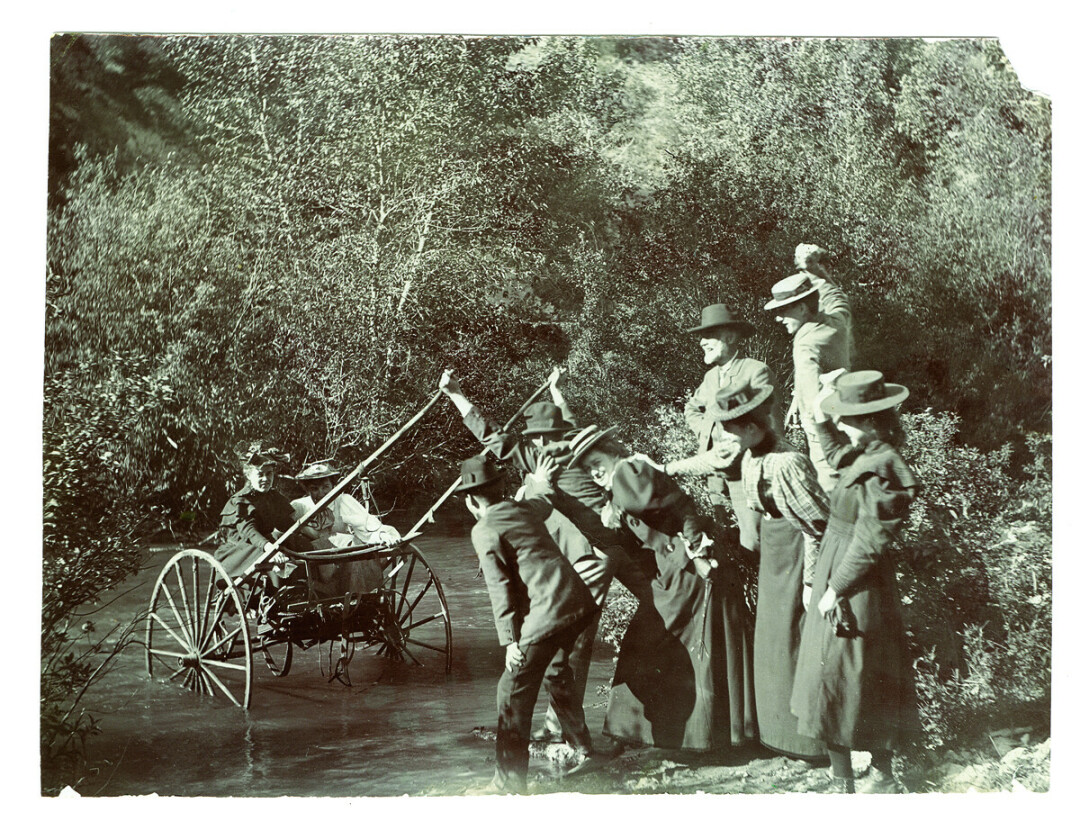
For the last 130 years, Camera Club members have documented the history of Gallatin County through their photographs. When the United States celebrated its Bicentennial in 1976, the Camera Club of Bozeman was there, ready to record life in Gallatin County in honor of the Nation’s birthday. Committees formed, each with a variety of topics to photograph, such as architecture, agriculture, geographical regions of Gallatin County, and even “implements of daily living.” The club received a grant from the Gallatin County Bicentennial Committee to help offset costs. When the project was finally completed in early 1977, nearly 700 slides documented life in Gallatin County during the Bicentennial year — from kitchen appliances to Main Street views. This collection is an invaluable resource at the Gallatin History Museum, and provides a snapshot of what our area was like nearly fifty years ago.
The Camera Club of Bozeman still enjoys competitions, events, and field trips. No matter how much technology changes, there is still excitement and camaraderie surrounding the quest to get that perfect shot. This holiday season, try documenting Gallatin County history through your own lens. Who knows? Your work could end up in a museum someday.


